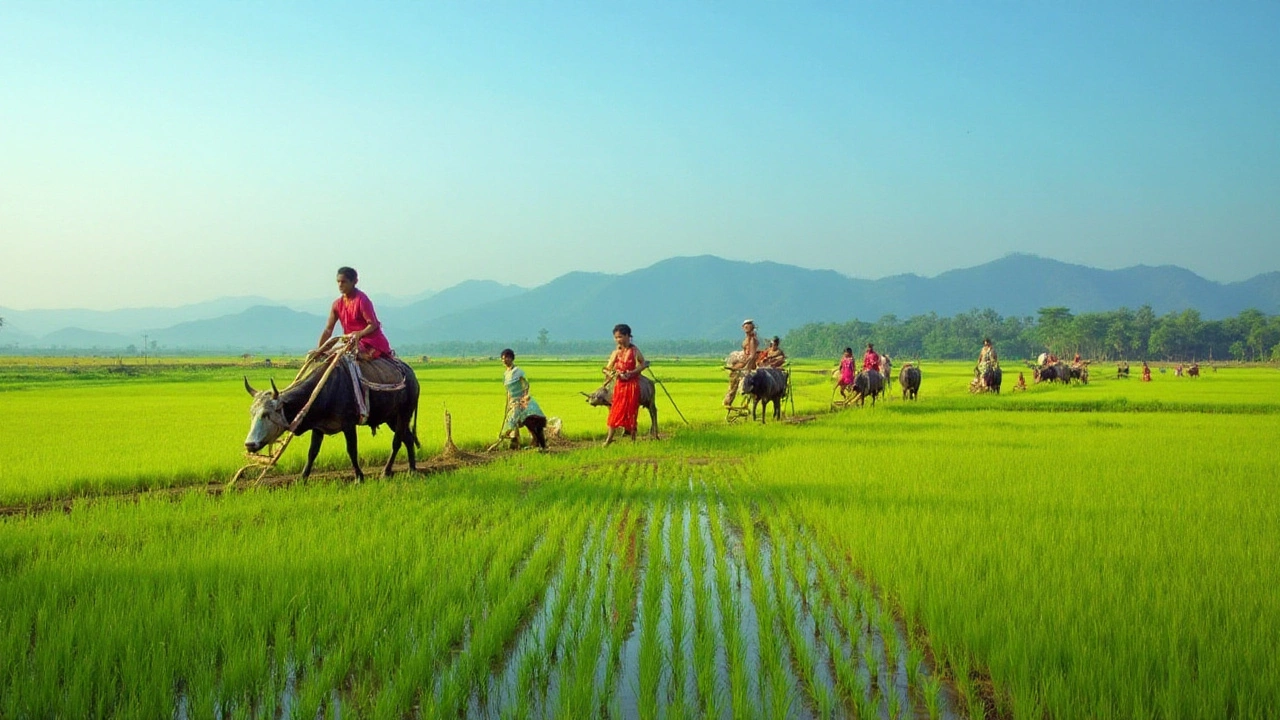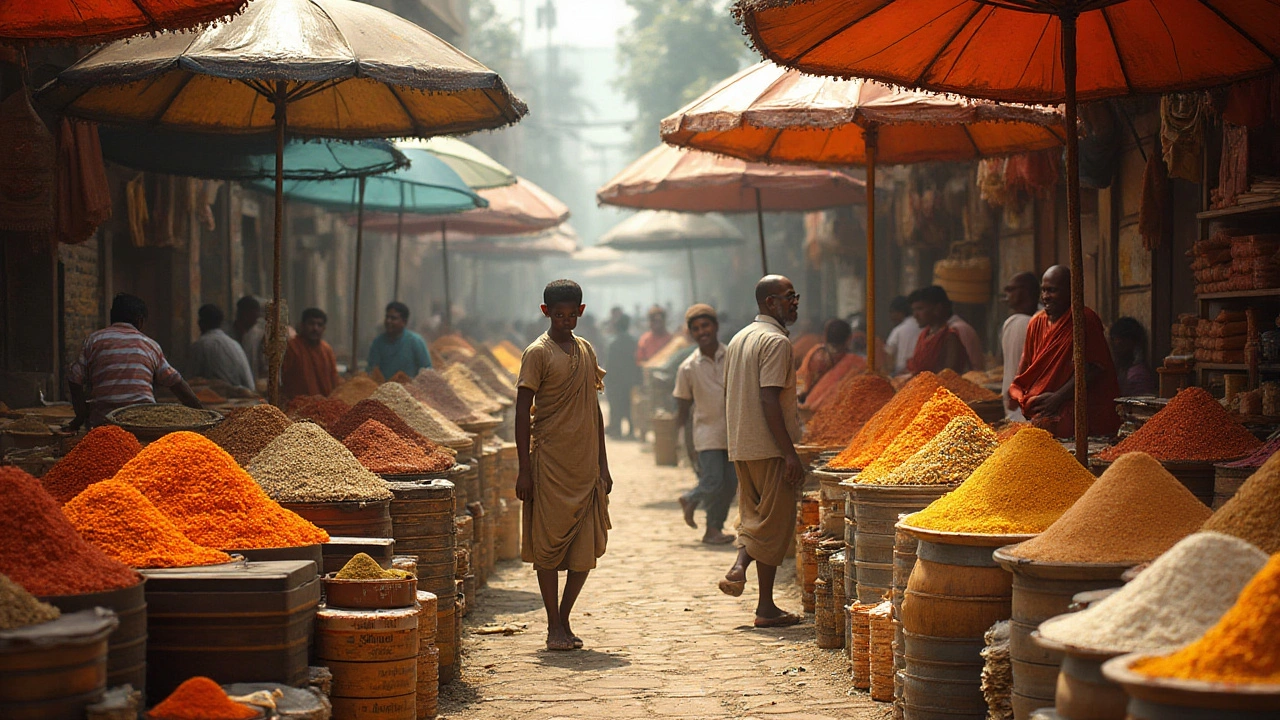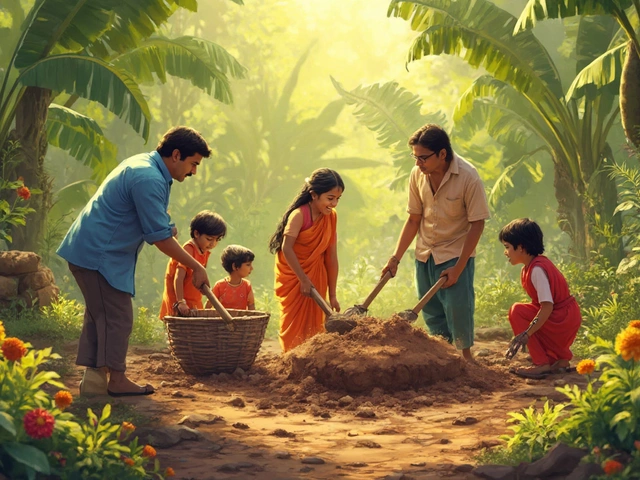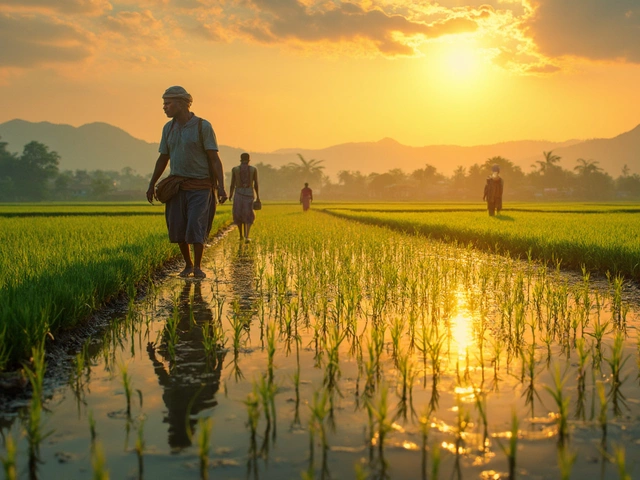Rice is woven into the fabric of societies across the globe, feeding billions and fueling economies. For nations like China, India, and Indonesia, rice is far more than a food source; it is a symbol of tradition and a linchpin of daily life. Yet, this humble grain's influence extends beyond the borders of its largest consumers.
In many African countries, rice is becoming increasingly popular, not just as an import but as a vital crop that supports economic growth. Meanwhile, in Latin America, rice cultivation and consumption patterns are evolving, influenced by changing consumer preferences and climatic conditions.
This article will unpack where the demand for rice is highest and dive into the factors shaping these dynamics, offering insights into the shifting landscape of global rice trade and cultivation.
- Rice: An Essential Staple
- Top Rice Consuming Nations
- Factors Driving Rice Demand
- The Impact of Climate on Supply
- Future Trends in Rice Demand
Rice: An Essential Staple
In the vast tapestry of global agriculture, rice stands as a remarkable testament to human innovation and adaptability. From the terraced paddies of China to the sprawling fields of India, rice has nourished civilizations for millennia. Its journey from a wild grass to a globally cultivated crop illustrates not just agricultural prowess but also cultural unity. With over half of the world's population relying on rice as a primary food source, its influence is nothing short of monumental. Across Asia, it serves as both sustenance and cultural identity, embodying customs and continuity in rapidly changing societies.
The versatility of rice as a food staple is astonishing. Not only does it thrive in diverse climates—from humid lowlands to high-altitude terraces—but it also forms the cornerstone of countless culinary traditions. This adaptability is crucial to its role as a food security staple. Different varieties, ranging from the fragrant jasmine rice of Thailand to the sturdy japonica of Japan, offer a spectrum of nutritional benefits. The sheer genetic diversity ensures resilience against climatic challenges, a critical aspect in an era marked by unpredictable weather patterns due to climate change.
According to the International Rice Research Institute, "Rice is life for Asians; its importance cannot be overstated in this region where it provides 35 to 59 percent of the caloric intake of consumers."
The economic significance of rice cannot be understated. Being a staple in major economies like China, which accounts for about 30% of global consumption, its production and trade play pivotal roles in domestic and international markets. Countries like Vietnam and Thailand have positioned themselves as top exporters, sharing their robust agricultural yields with nations where rice cultivation is either not feasible or insufficient to meet demand. The global rice trade thus stitches together a tapestry of dependency and cooperation, influencing geopolitical relations.
Rice has also undergone transformations through agricultural technology. Genetic modifications and enhanced farming techniques have led to increased yields and pest resistance, making it possible to meet the growing global demand without significantly increasing the area under cultivation. These advancements have proved vital in maintaining stability in the rice market and ensuring affordability for this essential grain. As demand continues to rise, especially in developing regions where rice consumption is escalating, the role of science in the enhancement of rice production will only become more crucial.
Top Rice Consuming Nations
The world of rice consumption is a fascinating mosaic, stitched together by geographic, cultural, and economic threads. Asia sits firmly at the heart of this tapestry, as historical traditions and burgeoning populations drive the demand for this indispensable grain. In countries like China and India, rice consumption is ingrained in the everyday fabric of life. China, leading the pack, not only grows but consumes the most rice, aligning with its reputation as the most populous country in the world. The Chinese appetite for rice is deeply rooted in both history and daily cuisine. From stir-fried delicacies to comforting rice porridge, it's a staple that continues to hold culinary sovereignty.
India, with its vast cultural diversity, showcases rice in myriad forms. Here, rice is more than just sustenance; it is part of the religious and social fabric of the country, playing a starring role in festivals, weddings, and day-to-day meals. The Basmati and non-Basmati varieties reflect regional preferences and agricultural ingenuity, contributing to the global trade network as well. If we explore Indonesia, another major player, rice stands as the backbone of its dietary structure. In this archipelago, rice paddies unfurl across the land, a testament to the climate and skilled local farmers.
Venture west to Bangladesh and you'll find rice being cultivated across its fertile plains. Despite challenges such as climate change and resource scarcity, rice remains king, supporting both local consumption needs and economic stability. Talking about rice consumption patterns, an interesting shift is occurring in Nigeria. Traditionally reliant on imported rice, this African nation is becoming increasingly self-sufficient as it seeks to boost local production. Aiming to reduce dependence on imports, internal initiatives are encouraging the cultivation of indigenous varieties. This reflects a larger trend being seen in other African nations.
"Rice feeds more than half of the world's population, making it crucial regarding food security, especially in Asia." – Dr. Robert Ziegler, former Director General of the International Rice Research Institute.
This interplay of tradition, necessity, and economic strategy has molded the current state of global rice demand. As global trends continue to shape rice consumption, the emphasis on local diversification and self-reliance is bringing unique changes to both consumption habits and agricultural practices. The value of rice consumption is not only measured by the volume consumed but by its cultural, economic, and nutritional significance to millions worldwide.

Factors Driving Rice Demand
The global appetite for rice is not driven by a single factor; rather, it is a complex tapestry of elements that interact to shape demand. Chief among these factors is the sheer number of people for whom rice is a dietary cornerstone. In countries like China and India, home to billions, rice is more than nutrition—it's tradition, ingrained in customs and meals. As these populations continue to grow, so does their consumption. Beyond population size, urbanization plays a significant role in increasing rice demand. As more people move to cities, diets tend to shift toward convenience foods, and rice fits snugly in this niche with its ease of preparation and versatility in cuisine.
In addition to demographic changes, economic development significantly influences rice consumption patterns. As countries see a rise in income levels, dietary preferences often evolve. This can lead to greater consumption of rice in middle-income households who begin to favor rice over other staples due to its simplicity and adaptability in various dishes. As an agricultural product, rice demand is also highly responsive to changes in price. When prices are low, consumption can increase, emphasizing how sensitive food markets can be to economic variables. With the global nature of the rice trade, international dynamics, such as trade agreements and tariffs, further complicate how demand is expressed and satisfied around the world.
Climate change stands as a seldom-discussed yet pivotal force impacting rice demand. As weather patterns shift and water scarcity becomes more pronounced, regions traditionally reliant on rice must adapt. This has led to fluctuating yields, which can aggravate supply constraints, driving up prices and consequently affecting demand. Scarcity can lead to increased demand for alternatives, influencing how countries balance their agricultural output. As pointed out by a recent report from the International Rice Research Institute, "The adaptability of rice cultivation in different environments is challenged by accelerating climate change, demanding innovative solutions in farming techniques."
Lifestyle trends also contribute to the demand shifts. Health consciousness is on the rise globally, and some markets are seeing increased interest in specialty rices, such as brown and wild rice, known for their nutritional benefits compared to traditional white rice. This niche market is growing, particularly in urban settings where dietary variety is valued. The versatility of rice, complemented by its nutritional makeup, makes it an attractive option for those seeking to diversify their culinary repertoire.
| Factor | Impact |
|---|---|
| Population Growth | Increases demand due to more mouths to feed. |
| Urbanization | Leads to dietary shifts favoring convenient foods. |
| Economic Development | Income growth can lead to greater rice consumption. |
| Climate Change | Alters yields and supply, affecting availability. |
| Lifestyle Trends | Health trends boost demand for specialty rice varieties. |
The Impact of Climate on Supply
Climate change is increasingly reshaping the landscape of rice cultivation, with far-reaching implications on global supply. The delicate balance required for rice farming is being disrupted by shifting weather patterns, rising temperatures, and the unpredictability of growing seasons. In countries where rice is a dietary staple and a key crop, such as India and Bangladesh, these changes can have profound economic and social impacts. Unusually high temperatures during critical growing periods can cause stress on rice plants, impacting yields as well as quality. Farmers in Vietnam have observed that erratic rainfall, coupled with rising sea levels, leads to soil salinity issues, which reduces the viability of rice fields.
A recent report from the International Rice Research Institute (IRRI) highlighted that suboptimal conditions are not restricted to Asian countries alone. In fact, they are also affecting rice-growing areas in parts of Africa and the Americas.
"It’s imperative that we develop climate-resilient rice varieties that can withstand harsher conditions,"emphasizes an expert from IRRI. These remarks reflect the urgent need for effective adaptation strategies to minimize the adverse impacts of climate change on rice farming. Efforts are underway in many parts of the world to genetically engineer rice varieties to be more drought-resistant and able to thrive in waterlogged environments. Such innovations are essential to securing the future of rice supply amid challenging climatic conditions.
The impact of climate change on global rice trade is also significant. As traditional supply regions face production challenges, importing nations must look for alternative suppliers, leading to shifts in international trading patterns. A table from a recent agriculture report illustrates how climate-induced disruptions have altered rice export volumes from major producers over the last decade:
| Year | Export Volume from Top Producers (in million tonnes) |
|---|---|
| 2015 | 450 |
| 2020 | 430 |
| 2023 | 410 |
Admittedly, as climatic impacts continue, finding a balance between maintaining yield levels and ensuring environmental sustainability becomes more challenging. Innovative field practices like System of Rice Intensification (SRI) are being explored. This technique promotes increased productivity by optimizing plant, soil, water, and nutrient management. It also requires fewer inputs, which lessens the environmental footprint of farming. As farmers adapt to these evolving practices, knowledge exchange becomes crucial. Workshops and farmer field schools are vital in spreading awareness, sharing best practices, and equipping communities with the tools they need to combat climate change effectively.

Future Trends in Rice Demand
As we move through the 21st century, the demand for rice is poised to undergo a transformation, shaped by a palette of interconnected factors. One noteworthy trend is the rising demand in urban centers across developing nations. Urbanization fuels this change, with city dwellers opting for grains like rice because of its quick cooking time and adaptability to various dishes. Such dietary shifts indicate not just a growing preference but also suggest socioeconomic changes where convenience and versatility take center stage.
The increasing appetite for rice in regions like Sub-Saharan Africa is intriguing. Traditionally reliant on other staples like maize, these regions are transitioning towards rice due to its perceived prestige and ease of preparation. This transition is also stimulated by population growth that outstrips domestic production, leading to a reliance on imports. Governments, acknowledging these dynamics, are investing in agricultural reforms to encourage local rice cultivation, seeking a balance between self-sufficiency and global trade.
Significantly, climate change is expected to play a dual role. While it threatens traditional rice cultivation areas with erratic weather patterns and rising sea levels, it also presents opportunities in regions where warmer temperatures can extend growing seasons. Researchers are developing climate-resistant rice strains that promise resilience against floods and droughts, ensuring stable supplies even in challenging conditions. These strains might redefine production landscapes globally and are vital to meeting rising demands.
"The future of rice production and consumption will be influenced by both human ingenuity and nature's unpredictability," emphasized Dr. Emily Chen of the International Rice Research Institute.
Economic policies and trade agreements are another pivotal aspect. Nations like Thailand, Vietnam, and India, as major rice exporters, shape market trends with their trade policies. Bilateral agreements and tariff adjustments can open or close access to key markets, directly impacting global supply chains. The interplay of protectionism and globalization in these policies will steer the availability and price of rice on the global stage.
The Technological Edge
Technology offers a beacon of hope, enhancing productivity with advanced techniques. Precision agriculture, employing satellite imagery and AI, optimizes resource utilization, reducing waste and enhancing yields. Digital marketplaces are connecting small farmers to a broader market, enabling better price realization and ensuring that the right quality rice reaches the right consumer. These technological advances, though nascent, are revolutionary, promising to align production with ecological and economic needs.To visualize the forecasted demand, here's a brief look at projected consumption growth in key regions:
| Region | Projected Growth Rate (2025-2035) |
|---|---|
| Asia | 2.5% annually |
| Africa | 3.8% annually |
| Americas | 1.5% annually |
All these factors, interlinked and dynamic, will guide the path of future rice demands. As dietary habits evolve and environments transform, the versatility and resilience of rice will remain vital. The global community must remain vigilant, adopting innovative solutions to ensure this critical staple continues to thrive.





